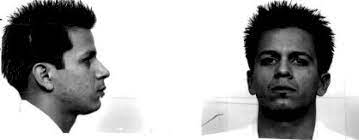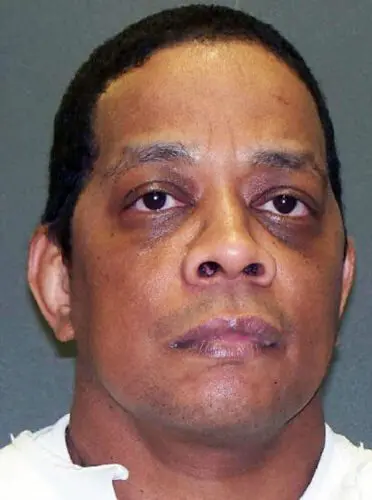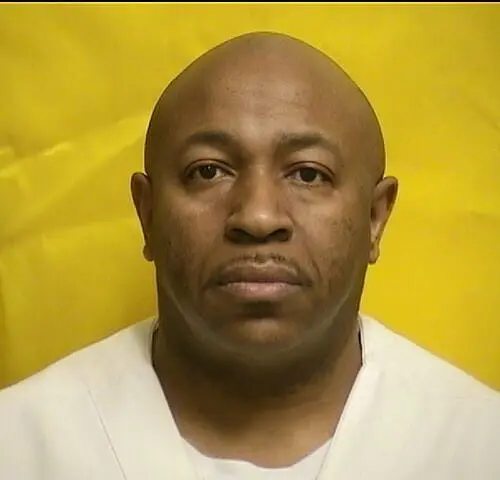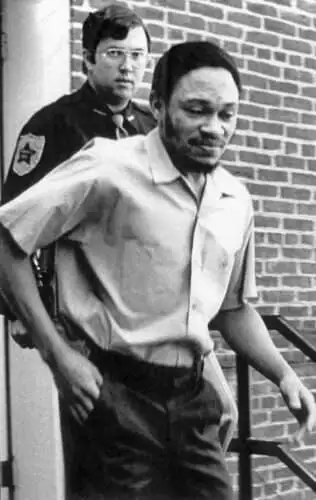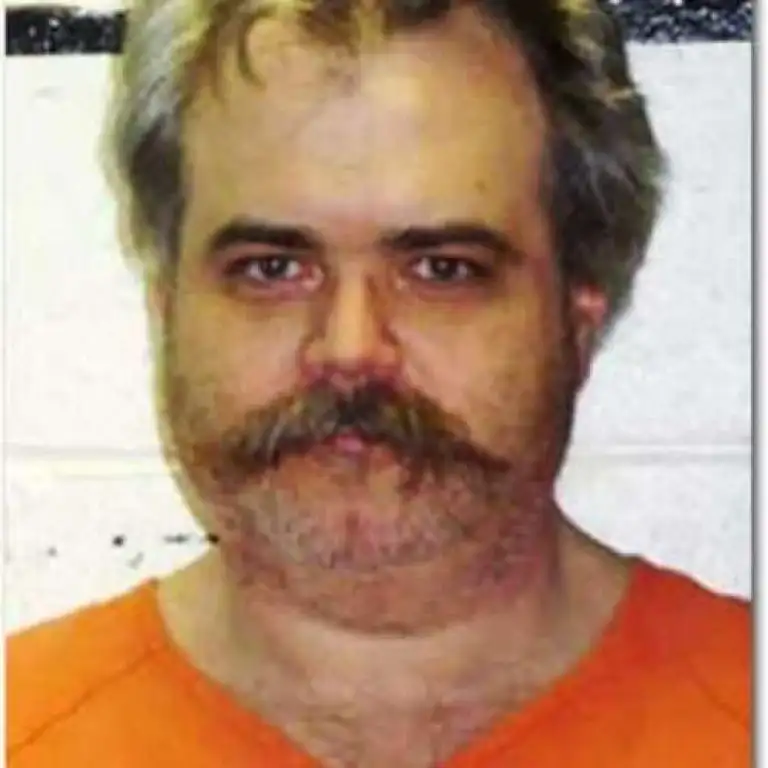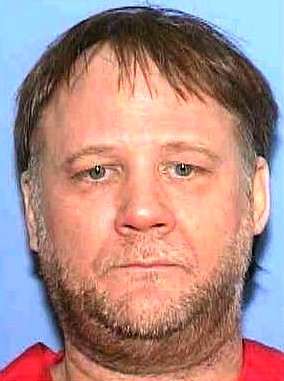Errol Moses Murders 2 In North Carolina
Errol Moses was sentenced to death by the State of North Carolina for two murders
According to court documents Errol Moses was a drug dealer and in order to protect his territory he would commit two murders. Moses would murder Jacinto Dunkley in 1995 and would murder Ricky Griffin in 1996
Errol Moses would be arrested, convicted and sentenced to death
Errol Moses Photos
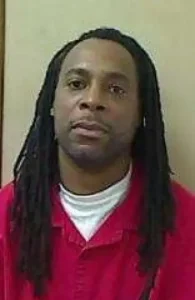
Errol Moses Now
| ERROL D MOSES | |
| Offender Number: | 0552017 |
| Inmate Status: | ACTIVE |
| Gender: | MALE |
| Race: | BLACK/AFRICAN AMERICAN |
| Ethnic Group: | NOT HISPANIC/LATINO |
| Birth Date: | 12/02/1971 |
| Age: | 51 |
| Current Location: | CENTRAL PRISON |
Errol Moses Case
Between 10:00 p.m. and 11:00 p.m. on 24 November 1995, Ronald Webb, Anthony Sheppard, and Ricky Griffin (Griffin) were at Crockett’s Barber Shop in Winston-Salem. As the three men were leaving the barber shop, defendant approached Griffin. They began arguing, and Griffin pulled a knife on defendant. After a brief skirmish, Griffin apologized, and they went their separate ways.
On 25 November 1995, around 2:30 a.m., Donald Brooks saw Griffin talking with defendant on a street corner near Griffin’s house. Griffin was a drug dealer who also stole property and sold it to make money. Griffin frequently dealt with defendant. During this encounter, Brooks testified that Griffin was attempting to sell a telephone to defendant. According to Brooks, defendant told Griffin he did not want the telephone, but he did want marijuana. Griffin told defendant he would return to his house and page Larry Cason to get some marijuana. Brooks then asked defendant to take him home, and the two men left in defendant’s Volkswagen automobile.
Soon thereafter, Griffin’s brother, Randolph Griffin, saw Griffin in the kitchen of their residence in Winston-Salem. Griffin told his brother he was trying to page defendant and Cason. Telephone records indicate that six calls were placed from the telephone at Griffin’s residence during the early morning hours of 25 November 1995 between 2:47 a.m. and 2:55 a.m., including two calls to defendant’s pager and four calls to Cason’s pager. According to Randolph Griffin, when he left to go upstairs to his bedroom, his brother was still in the kitchen. Thereafter, he heard three gunshots outside his house. When he ran outside to see what had happened, he found his brother lying in a pool of blood in front of the house. Randolph Griffin called 911, and law enforcement and emergency rescue personnel arrived within a few minutes. Griffin was transported to the hospital and pronounced dead shortly thereafter.
At the crime scene, law enforcement officers found a 9-mm shell casing on the ground approximately fifteen feet from the victim’s body. On 27 November 1995, Randolph Griffin was raking the front yard of his house when he found two additional 9-mm shell casings on the ground. He called law enforcement, who came and retrieved the shell casings.
According to Cason, on 25 November 1995, after receiving the second page from Griffin, he returned the call from a residence where he was playing cards. He told Griffin he did not have any marijuana to sell. Thereafter, Cason testified he left the card game and was driving home when he received the third page from Griffin. At that point, Cason pulled over and called Griffin from a pay telephone but received no answer. He then decided to go see what Griffin wanted. When he arrived at Griffin’s house, he saw Randolph Griffin holding his brother in the front yard. Each of the telephone calls placed to and from the Griffin residence was confirmed by telephone records.
Dr. Patrick Lantz, a Forsyth County medical examiner, performed an autopsy on Griffin’s body on 25 November 1995. Lantz determined Griffin died as a result of three gunshot wounds to the head: two wounds were about one inch apart in front of the victim’s right ear, and one wound was to the left side of his head. The two wounds on the right side of the face were surrounded by stippling, which is caused when gunpowder comes out of the barrel of a gun, strikes the skin’s surface, but does not completely burn. Because of the presence of stippling, Lantz determined these two shots were fired from a range of approximately two feet or less. The third wound, on the left side of the face, did not have stippling present. Therefore, Lantz could not determine the distance from which the shot was fired. Further, projectiles recovered from Griffin’s body were determined to be from a medium-caliber handgun, possibly a 9-mm handgun.
DUNKLEY MURDER
Sabrina Mims met defendant in December 1995, and they began dating shortly thereafter. That same month, defendant introduced Mims to Jacinto Dunkley. Defendant informed Mims that Dunkley was the person for whom defendant sold drugs. During the time they dated, Mims observed both a .380-caliber pistol and a 9-mm Ruger handgun in defendant’s possession. Sometime during the week prior to 27 January 1996, defendant attempted to get Mims’ cousin, Shatina Givens (Givens), to set up Dunkley by meeting him and finding out where he kept money and drugs in his house. Defendant offered to pay Givens to carry out the plan, but Givens refused.
On 26 January 1996, Mandy Wood, Dunkley’s girlfriend, was watching television at Dunkley’s house when defendant called. Dunkley answered the telephone. He and defendant began arguing about how Dunkley had been trying to get in touch with defendant, but defendant had been avoiding him. At one point, Dunkley got upset and hung up the telephone. Defendant called back, and this time Wood answered the telephone. She handed the telephone to Dunkley, and he and defendant began arguing again. The two ended the conversation by agreeing to meet the next night, 27 January 1996, at 9:00 p.m.
On 27 January 1996, defendant and Casey McCree were at Mims’ apartment in Winston-Salem, “drinking and partying” with a number of different people. According to McCree, it was an “all day event.” Telephone records indicate that at approximately 9:09 p.m., defendant received a page from Dunkley. Thereafter, between 9:30 p.m. and 10:00 p.m., defendant asked McCree to ride with him to Dunkley’s house. Defendant told McCree that Dunkley owed him money and that he was going to collect it. Defendant and McCree left the apartment in defendant’s Volkswagen and proceeded to Dunkley’s house. Defendant told McCree he was “going to go do something and if another person is there you’re going to have to go ahead and do her, too.”
On the way to Dunkley’s house, defendant stopped at the Enterprise Car Rental. While there, defendant stole a Buick automobile. McCree then drove the Volkswagen and defendant drove the stolen Buick to an undisclosed area, where they left defendant’s Volkswagen. They proceeded to Dunkley’s house, and when they arrived, defendant parked the stolen Buick just across and down the street from the house. Defendant and McCree approached the house, and McCree knocked on the door. Dunkley answered the door, and McCree shook his hand and walked in. Defendant pulled out his 9-mm Ruger and approached Dunkley, who backed into the kitchen. In a fierce tone, defendant began asking Dunkley where his money was located. When Dunkley asked what he was talking about, defendant shot him in the chest. Defendant asked again where his money was located, and then shot Dunkley in the head. While Dunkley lay dead on the kitchen floor, defendant asked McCree to help him ransack the house so it would look like a robbery. McCree saw defendant take a wad of money from a drawer in Dunkley’s house and a gold-colored diamond ring from Dunkley’s finger.
When defendant left Dunkley’s house, he took the keys to Dunkley’s Pontiac and asked McCree to drive it. McCree followed defendant, who was driving the stolen Buick, and they abandoned Dunkley’s automobile. Defendant and McCree drove the stolen Buick back to Enterprise Car Rental and parked it in the same space it was parked earlier. From there, defendant and McCree stopped briefly at Robyn Gardner’s apartment in Winston-Salem. Defendant lived in the apartment next door with his girlfriend Anesha. According to Gardner, she was not sure exactly what time it was when defendant and McCree arrived at her apartment, but it was dark outside. She testified that defendant asked her to hide a gun, later identified as the 9-mm Ruger used in both murders. Around 11:30 p.m., defendant and McCree returned to Mims’ apartment.
Later, defendant, McCree, and Givens left the apartment and were involved in an automobile accident. When Winston-Salem Police Officer John Tesh arrived on the scene, he found defendant, who had been driving the automobile, lying about twenty feet from the wreckage. Defendant complained that his right arm was hurt, and he tried to stuff a wad of money into his pants pocket. Tesh also observed a pager, a gold-colored diamond ring, a black leather jacket, and a torn tee shirt lying on the ground three to five feet from defendant. Additionally, Tesh discovered McCree lying near the car and Grenecia Givens’ body inside the car. Grenecia Givens was pronounced dead at the scene, and defendant and McCree were rushed to the hospital.
According to Wood, Dunkley’s girlfriend, Dunkley drove her to work at 6:00 p.m. on 27 January 1996 and was supposed to pick her up when she got off work at 2:00 a.m. the next morning. However, Dunkley never arrived, and she did not hear from him. On 30 January 1996, Wood went by Dunkley’s house, but no one answered the door. On 31 January 1996, Winston-Salem police officers responded to a possible break-in call at Dunkley’s house. When the police arrived, they discovered Dunkley’s body in the kitchen. The house was in disarray. A 9-mm shell casing was seized from the scene.
On 1 February 1996, Lantz, the same medical examiner who examined Griffin’s body, performed an autopsy of Dunkley’s body. According to Lantz, Dunkley died as a result of two gunshot wounds: one wound to the left side of the head, above and behind the left ear, and the other to the abdomen and right arm. The head wound was surrounded by stippling, indicating a shot was fired from approximately two feet or less. The wound to the abdomen was caused by a bullet which entered below the rib cage, exited above the right hip, and lodged in the right arm. The projectile recovered from Dunkley’s body was also determined to have been fired from a 9-mm handgun.
A few days after the murder, defendant was incarcerated in the Forsyth County jail on other charges. Defendant telephoned Anesha from jail and asked her to get the 9-mm Ruger from Gardner’s apartment and take it to Tony Duncan. According to Duncan, he spoke with defendant on the telephone, and they agreed that Duncan could buy the handgun. Thereafter, on approximately 1 April 1996, a Winston-Salem police detective seized the 9-mm Ruger from Duncan in the course of his investigation of the Dunkley murder.
Special Agent Thomas Trochum of the North Carolina State Bureau of Investigation (SBI) performed a ballistics test on the 9-mm Ruger and compared it with the evidence seized in both the Griffin and Dunkley murder cases. In the Griffin case, Trochum examined three cartridge cases which were recovered from the crime scene and a bullet fragment which was removed from Griffin’s head during the autopsy. After examining these items, he determined that each was fired by defendant’s 9-mm Ruger to the exclusion of all other handguns. In the Dunkley case, Trochum examined a cartridge case recovered from the crime scene and two bullet fragments taken from Dunkley’s body during the autopsy. Again, after inspecting these items, he determined that each was fired by defendant’s 9-mm Ruger to the exclusion of all other handguns.
The two murder charges were joined for trial, and the trial began in Forsyth County on 3 November 1997. On 14 November 1997, the jury found defendant guilty of one count of first-degree murder under the felony murder rule and a second count of first-degree murder under both premeditation and deliberation, and the felony murder rule. Thereafter, on 18 November 1997, the jury recommended death on both charges, and the trial court entered judgment accordingly. Defendant appeals to this Court as of right from the sentences of death.
https://caselaw.findlaw.com/court/nc-supreme-court/1435104.html









